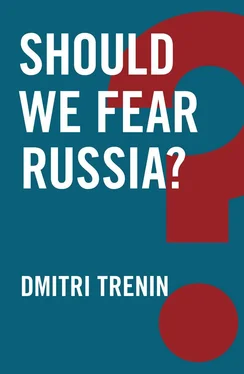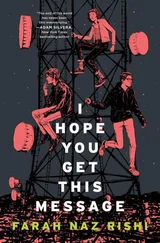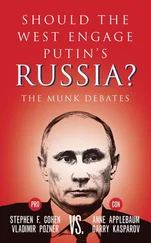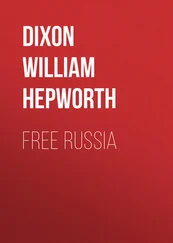One thing Vladimir Putin has learned from the history of both Gorbachev’s and Yeltsin’s dealings with the West, is never to be weak, and never to appear weak. “The weak get beaten.” Even if the odds are against Russia, Putin is punching above the country’s weight rather than submitting himself to the will of others. Over time, Putin went further. Summing up his own experience of fifteen years at the helm of the Russian state, he concluded that, if a fight is inevitable, one needs to strike first. Looking from the Kremlin, over the years Russia had drawn a number of red lines to its partners, which they chose to ignore. Finally, this provoked Moscow’s pushback. In Putin’s view, his predecessors’ main mistake was not being assertive enough in defending the country’s national interests.
These red lines, first drawn by Foreign Minister Yevgeny Primakov in 1996, referred to the issue of admitting ex-members of the Warsaw Pact, which had formed the Soviet Union’s strategic glacis in Europe, to NATO. The combination of Russian opposition to NATO’s enlargement and its support for self-proclaimed separatist states led in 2008 to the first large-scale use of Russian military power since the demise of the Soviet Union. The Russian forces were brought into action by the botched attempt by the impetuous Georgian president Mikheil Saakashvili to re-establish control over the rebel region of South Ossetia, which led to the killing of a number of Russian peacekeepers there.
Once the war began, Russian troops did not confine themselves to the immediate area of conflict but proceeded to occupy areas of Georgia proper, coming within a striking distance of the Georgian capital Tbilisi. The point made, they were ordered to stop. Soon thereafter, Moscow formally recognized the separatist statelets of South Ossetia and Abkhazia, thus redrawing the post-Soviet borders for the first time. This was a loud warning shot. However, it was soon muted by the avalanche of the global financial crisis. A short-lived reset between Washington and Moscow followed.
In a somewhat similar move, reacting to the 2014 Maidan revolution in Kiev, which brought to power pro-Western elements within the Ukrainian elite in a coalition with western Ukrainian nationalists, Russian forces took control of Crimea (where Russia had long had a naval base), threatened to use military force elsewhere in Ukraine, staged a referendum in majority-Russian Crimea on joining Russia, formally incorporated the peninsula into the Russian Federation as a result, and actively supported an armed rebellion in Ukraine’s south-eastern Donbass region. This time, Russia not only redrew borders; it annexed territory, claiming the right to protect the interests of its co-ethnics. Many countries with Russian minorities became immediately concerned, from the Baltic States in NATO to Russia’s own allies in the Collective Security Treaty Organization such as Belarus and Kazakhstan.
Restoration of military power
Moscow’s more assertive foreign policy has been backed up by a reconstituted military force. After the 2008 Georgia war, Russian military reform began in earnest, and the decline of Russian military power which had lasted two decades began to be reversed. In 2010, a large-scale program of military modernization was adopted, with the stated aim of raising the share of “modern” weapons and equipment in the Russian arsenal from 30 to 70 percent by 2020. Military training and exercises were substantially upgraded. Russian military aircraft resumed routine patrols along the borders of the United States, the United Kingdom and other NATO countries, as well as Japan.
Even as Russia’s power began to grow, Moscow refused to live by the constraints imposed on it in its hour of weakness. When NATO countries refused to ratify the adapted Conventional Forces in Europe (CFE) Treaty, raising objections of the Russian military presence in Georgia and Moldova, Russia suspended its implementation of the original 1990 CFE document, which was negotiated when the Warsaw Pact was still around and which limited Russian troop movements within its own territory. With neither the adapted nor the original CFE treaty in operation, the risks of a surprise attack in Europe have grown.
The actual employment of force in Crimea in 2014 and in Syria in 2015 returned Russia to the ranks of major conventional military powers. The Crimea operation featured a very different military than the one that saw battle in Georgia six years previously, not to speak of the decayed army that fought in Chechnya in the 1990s. The actual use of Russian air and naval power in Syria was even more impressive. Russia’s post-Cold War military weakness has become history. Countries with strained relations with Moscow had to take notice.
Yet this concern needs to be put in perspective. Russia’s military power is a far cry from that of the United States. The Russian military budget is a small fraction of America’s. It trails far behind China’s. Except in the category of strategic and tactical nuclear weapons, there is no balance between Russia and the US, not to speak of a comparison with NATO. The new emerging front line in Europe passes just a hundred miles west of St Petersburg. Kaliningrad is completely surrounded on land by NATO territory. Similarly, the scale and intensity of Russia’s military operations, from the Balkans to the Middle East, are dwarfed by those of the United States and its allies. And Russia has practically no allies.
Hybrid warfare
Many Russians have recently grown accustomed to quoting Emperor Alexander III, that Russia has only two friends in the world – its army and its navy. However, to protect and actively promote its interests, Russia is not relying solely on its military instruments. In the areas of conflict in the post-Soviet space, it has used a number of local allies – pro-Russian political formations, businesses and paramilitary groups – as well as bona fide volunteers and military advisers, specialists and other personnel from Russia. This heterogeneous combination of assets has made it possible to wage what has been called in the West “hybrid warfare” – in reality, the combined employment of military, paramilitary and non-military means in support of political objectives, which also made it more difficult to accuse Russia of direct military intervention.
The use of these assets in Crimea allowed Moscow to claim absolute victory “without firing a shot.” In Donbass, the situation was less favorable to Russia, and Moscow’s intervention carried a risk of escalation to an all-out war. However, the Kremlin managed to keep its direct military involvement on the ground to the minimum required to keep the cities of Donetsk and Lugansk off limits to Kiev’s forces and to preserve the vital cross-border link between the rebel republics and the Russian Federation. Throughout the active phase of the conflict, Moscow carefully stuck to the position of “plausible deniability” with regard to its actual involvement. The Kremlin summarily dismissed Western accusations of lying, basically assuming that, after the breach of trust between Russia and the West in Ukraine, few holds there were barred.
“Hybrid warfare,” Crimea- or Donbass-style, however, can hardly be used where it is feared most: in the Baltic States and Poland. Moscow’s intentions aside, the local Russians’ self-identification with the Russian Federation cannot be compared to that of the Crimeans. Even though naturalization in Latvia and Estonia was made hard for local Russians, they are not looking to Moscow for protection and guidance. Daugavpils is not Donetsk-in-waiting, and Narva is no Lugansk. Poland is an even more far-fetched case. The Donbass model is not easily transferable, and employing it on the territory of a NATO member state denies the Kremlin any rationality whatsoever.
Читать дальше












